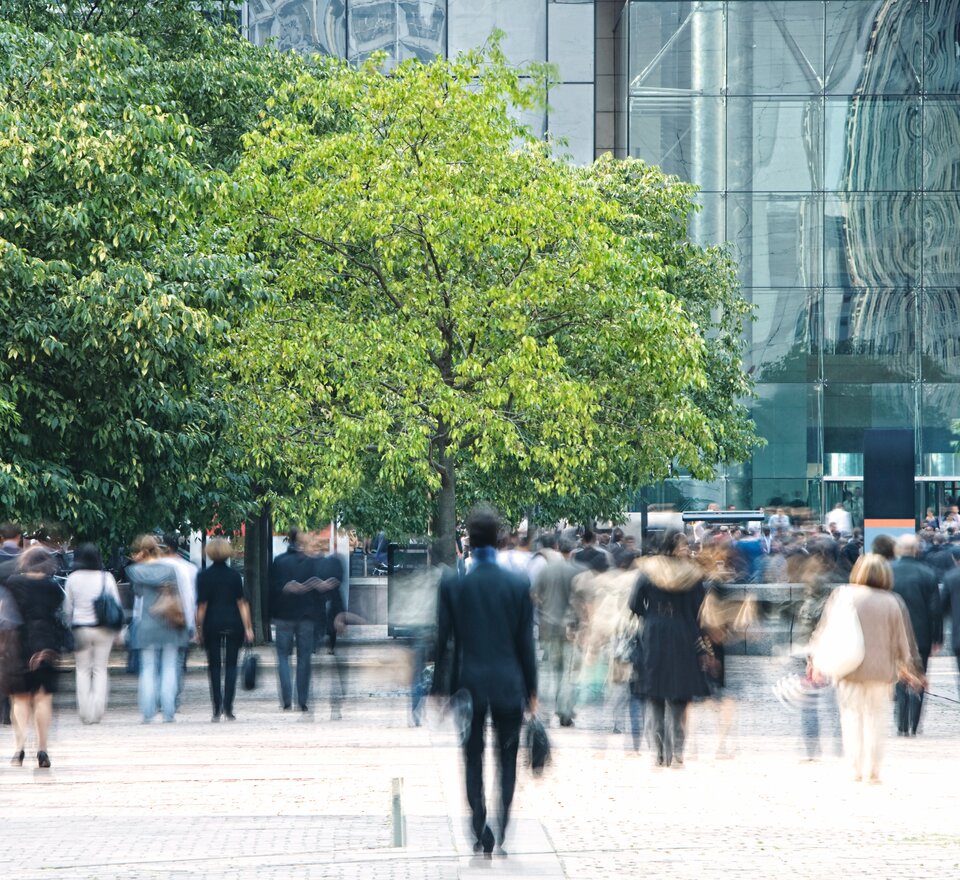How do we want to work in future? The breadth of concepts of Austrian architects is enormous and ranges from cosy work corners to virtual meeting rooms and Bluetooth-connected brains. However, no-one believes in working from home as a thing in itself. The focus, namely, is on communication and socialisation. Wojciech Czaja asked around.
It seems clear that the working from home culture will not only profit large companies and destroys the social and creative connections of a team. And the so-called hybrid office cultures, i.e. the combination of working from home and the real meeting-point office, works just as well or just as badly as a hybrid car, which, although it runs on electricity, consumes just as much petrol as a normal petrol car. At Coop Himmelb(l)au, we work at several levels. The large office will remain; there will also continue to be meeting rooms, even though most meetings with our international clients take place in the form of video conferences. As always, the creative solutions we need in project development will be found in personal contact. A three-dimensional, physical model that is tangible can be replaced by nothing in the architecture. However, we are currently working on virtual meeting rooms where we can process 3D models as a team in the event of an absolute lockdown. Problem solutions in online conferences come into question only for Excel list offices.
Wolf D. Prix , Coop Himmelb(l)au, Vienna, ©Zwefo
The future will show how we want to work tomorrow. However, one thing is certain – that, in an increasingly fast, increasingly complex working world, in spite of global networking and borderless digital possibilities, personal exchange and working together are becoming increasingly important. To enable this, open, flexible, inspiring spaces are needed. Spaces are needed that stimulate and motivate, spaces that allow different working situations, spaces in which people feel good. Working from home is not the future, because new things come into being through communication, community and direct exchange of knowledge, through talking and contradiction, through learning from each other. No digital accomplishment can replace this.
Dieter Henke and Marta Schreieck , Henke Schreieck Architekten, Vienna, ©Georg Molterer
The traditional sitting at a desk in an office will now be a rare thing. Increasingly, we will work always and everywhere. At the same time, however, we will also deal with and experience private matters always and everywhere. In future, we will not only collaborate on the same document over distance by means of an internet connection; our brains will also connect with each other via Bluetooth-type connections. There will no longer be anyone who practises just one single profession. And if there is, he or she will certainly not work for just one employer. We will tell our grandchildren about employment relationships with working time recording. There will hardly be any company headquarters anymore. Only meeting points. Because coming together in person will become increasingly valuable, increasingly attractive.
Jakob Dunkl, querkraft architekten, Vienna, ©querkraft/Alvarez
In the near future, we will organise our work completely differently under the specification of a CO2-neutral life. We will work together in person in different spaces – without absurdly long commuting to centralised offices. We will make many arrangements by means of digital communication and use the time gained for creative inventions to make our world better. To this end, we need to give up monofunctional buildings and quarters completely; instead, we need attractive semi-public and public spaces and transport logics suitable to modes of transport – 200 metres on foot, 2,000 metres by bike, as well as local public transport and individual electromobility.
Christoph M. Achammer, ATP Architekten & Ingenieure, Innsbruck Professor at the Chair for Integrated Planning and Industrial Building, TU Wien, ©ATP/Becker
I am sure that the workplaces as we know them will not be lost. However, they must be redefined: people want working worlds. And these working worlds, these places, are to offer people qualities that were previously not associated with the workplace. These are, primarily, spatial opportunities that respond to a wide variety of needs, with comfortable, optimally lit, well ventilated areas in differentiated zones. Particularly now in the coronavirus crisis, we are seeing that communication – and thus cooperation – can work very well on digital platforms. That has caused a rethink for many: we are asking the question as to how much mobility is actually needed in everyday working life and how the ecological footprint can be reduced by changed mobility behaviour. Despite this, I am of the opinion that digital communication will not replace being together in person. In total digitalisation, the essential nuances are lost. Innovative communication technologies have significantly softened the spatial boundaries of the workplace. However, to allow working from home to work for everyone, we architects as well as designers must go a step further. The old typologies are out of date; new ones must be defined. Here, I see a major and exciting task coming towards us, to which I look forward!
Elke Delugan-Meissl, DMAA Delugan Meissl Associated Architects, Vienna, ©Paul Kranzler
Wojciech Czaja

